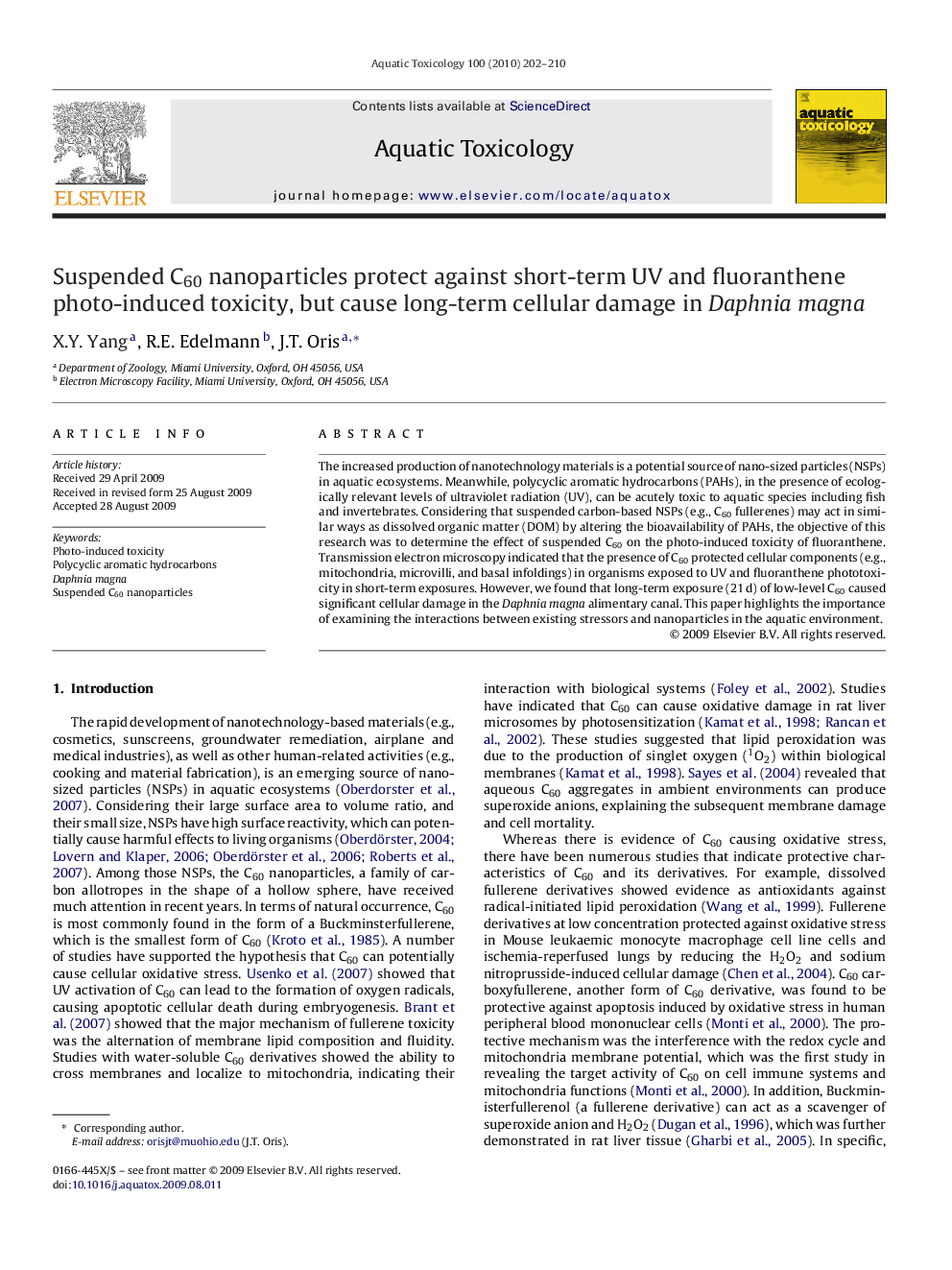| Article ID | Journal | Published Year | Pages | File Type |
|---|---|---|---|---|
| 4530152 | Aquatic Toxicology | 2010 | 9 Pages |
The increased production of nanotechnology materials is a potential source of nano-sized particles (NSPs) in aquatic ecosystems. Meanwhile, polycyclic aromatic hydrocarbons (PAHs), in the presence of ecologically relevant levels of ultraviolet radiation (UV), can be acutely toxic to aquatic species including fish and invertebrates. Considering that suspended carbon-based NSPs (e.g., C60 fullerenes) may act in similar ways as dissolved organic matter (DOM) by altering the bioavailability of PAHs, the objective of this research was to determine the effect of suspended C60 on the photo-induced toxicity of fluoranthene. Transmission electron microscopy indicated that the presence of C60 protected cellular components (e.g., mitochondria, microvilli, and basal infoldings) in organisms exposed to UV and fluoranthene phototoxicity in short-term exposures. However, we found that long-term exposure (21 d) of low-level C60 caused significant cellular damage in the Daphnia magna alimentary canal. This paper highlights the importance of examining the interactions between existing stressors and nanoparticles in the aquatic environment.
